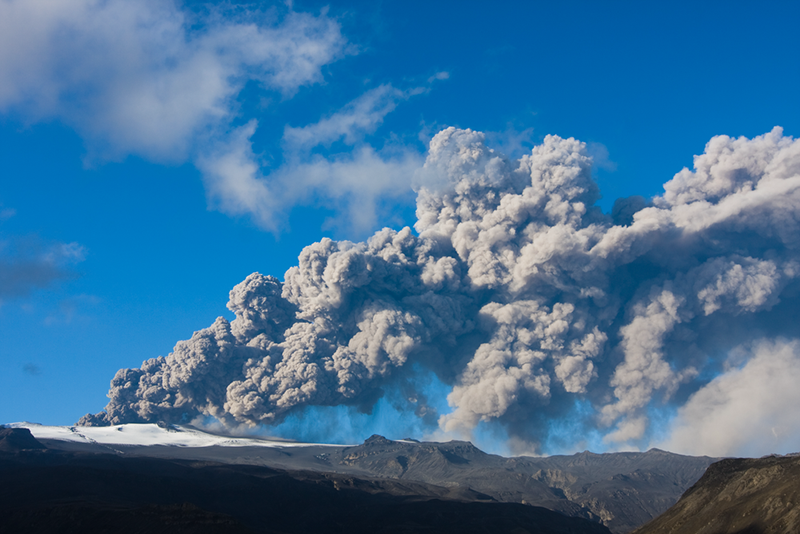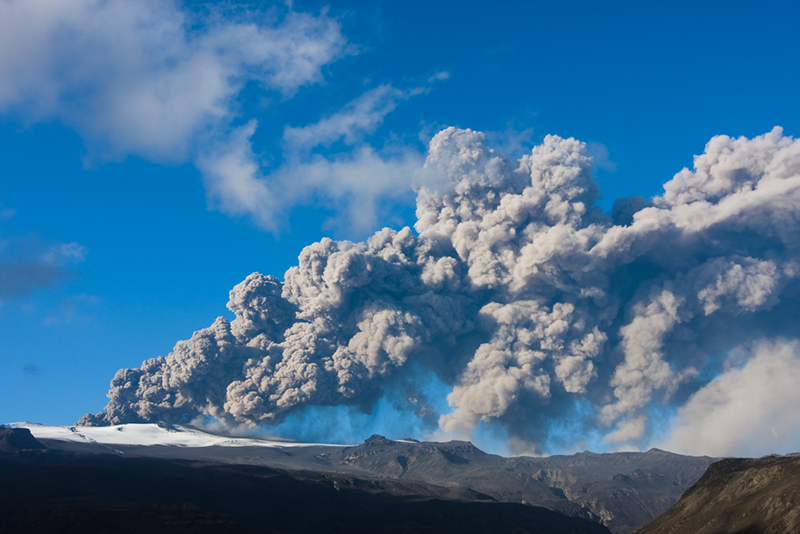Particles Flutter as They Fall
Ice crystals and volcanic ash fall through the atmosphere in a complicated way that has been hard to capture experimentally. A new lab experiment has photographed the descent of nonspherical plastic particles that were fabricated to resemble natural particles [1]. The images reveal oscillations in the particles’ orientations as they flitter downward. The results could help in modeling the formation of snow and the transparency of clouds, which is important for weather and climate models.
In order to study how micrometer-sized particles fall in the atmosphere, researchers must address the challenge of zooming in on the particles as they pass quickly in front of the camera. “The problem is that your field of view is so small that you have a very limited chance to see the particle for a long trajectory,” says Gholamhossein Bagheri from the Max Planck Institute for Dynamics and Self-Organization in Germany. Previously, researchers tried to solve this problem by performing experiments in water with easier-to-view centimeter-sized particles. The water slows the particle motion, but the ratio of particle size to fluid viscosity—which can be characterized by the dimensionless Reynolds number—remains roughly the same for larger, waterborne particles as for smaller, airborne particles. This correspondence between the two situations implies that water-based experiments can offer information about the speed and orientation of falling particles in the atmosphere.
But the water-based experiments can’t reproduce a key parameter in the atmosphere: the ratio of the density of a particle to that of the surrounding fluid. The relatively low density of air means that it is less resistant to particle motion—such as rotation—than water. To explore the effect of air’s lower fluid resistance, Bagheri and his colleagues have now performed experiments with objects falling in air using a sophisticated camera setup. “We made a ‘microscope’ that enables tracking of the particles over a long distance,” Bagheri says.
The researchers fabricated plastic particles using a 3D printer with submicrometer resolution. The particles had a range of sizes (50–800 µm) and a variety of nonspherical shapes (both disk shaped and football shaped). For each experimental run, the researchers grabbed a single particle with a needle-shaped device that released the particle in a precise location within an air chamber. Around the chamber were four high-speed cameras whose combined field of view formed a roughly 1-mm-wide column, or “pipe,” through the center of the chamber. About 20% of the time, the particle fell through this imaginary pipe, allowing the cameras to capture a series of images detailing the particle’s position and orientation over a 60-mm falling distance.
The images showed that falling particles assume a position with their largest cross section facing downward, like the orientation of falling tree leaves, which align parallel to the ground. This horizontal alignment was known from previous water-based experiments, but the team was surprised to observe oscillations around this stable orientation. The oscillations occur because the low-density air is less effective than water at damping the rotations of a particle as it “swings” like a pendulum.
In the atmosphere, such particle oscillations could have a number of implications. In a cloud, the tilting of ice crystals would affect the scattering of sunlight, either increasing or reducing reflections, depending on the time of day. Around a volcanic eruption, the oscillations would cause the falling speed of ash particles to vary with orientation. The speed variations, in turn, would affect how particles collide and stick together, and the larger the aggregate particles, the faster they fall. A similar process could affect the formation of snowflakes.
Granular flow expert Greg Voth from Wesleyan University in Connecticut says the new work “describes a beautiful set of experiments that reveal a new aspect of nonspherical particle motion.” The oscillations that the team observed have relevance to cases where the particle density is much larger than the fluid density, such as ice crystals in clouds and microplastic pollutants in the atmosphere. “Studying the rotational dynamics of these large, nonspherical, heavy particles provides a fundamental understanding of their settling rate,” says atmospheric scientist Qi Li from Cornell University. She says that knowing the settling rate can help researchers determine where atmospheric particles come from and predict where they may end up.
–Michael Schirber
Michael Schirber is a Corresponding Editor for Physics Magazine based in Lyon, France.
References
- T. Bhowmick et al., “Inertia induces strong orientation fluctuations of nonspherical atmospheric particles,” Phys. Rev. Lett. 132, 034101 (2024).





